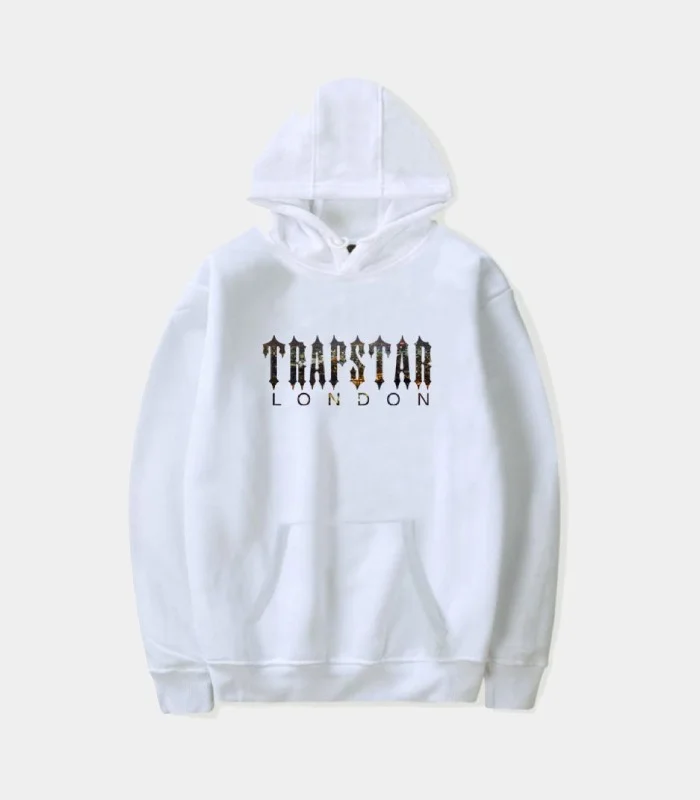Coded Chaos The Street Logic of Trapstar Style
The Code That Was Never Meant to Be Broken
Trapstar isn’t just a fashion brand—it’s a coded message to the streets. Born out of rebellion, raised by grime, and baptized in the heat of London’s underground culture, Trapstar style doesn’t ask for permission—it declares war on conformity. The name itself is a contradiction: “Trap” from the street hustle, “Star” from the shine earned through it. That balance of chaos and precision—that’s the language Trapstar speaks fluently.
What makes Trapstar more than just another label slinging oversized fits and blocky graphics is its cryptic approach to design and identity. It’s like streetwear encrypted. The question isn’t just “What are you wearing?” It’s “Do you even get it?”
From Notting Hill to Global Pulse: Origins of the Code
The genesis of Trapstar is deeply London. Not polished, posh London—but the gritty, fast-moving heart of West London. Co-founders Mikey, Lee, and Will weren’t trying to crack the fashion industry—they were answering to a scene. Their work didn’t come from boardroom meetings; it came from the chaos of their environment. Word spread through whispers. Early drops came in small batches and sold through back channels. If you knew, you knew.
This approach created a feeling of exclusivity that couldn’t be faked. People weren’t just buying clothes—they were buying into a movement that moved differently. Trapstar wasn’t hyped up by mainstream media. It was carried by word of mouth, by trust, by the streets themselves.
Street Logic: The Visual Language of Trapstar
Trapstar’s aesthetic isn’t neat or refined. It’s jagged, raw, urgent. Think blocky fonts that feel like warning signs, flames licking across hoodies, and cryptic slogans that sound like encrypted codes from the edge of a cyberpunk dystopia. And yet, it’s all deliberate. Every “chaotic” element has its place.
One of Trapstar’s iconic pieces is the “It’s a Secret” collection—an almost ironic statement for a brand that’s always been half in the shadows. You might see a jacket that says “If You Don’t Know, Don’t Worry” across the back. That’s not just a design—it’s a gatekeeper’s nod. It says this brand isn’t for everyone. It never was.
The street logic is simple: If it’s too loud for you, you were never part of the code.
Celebrities Didn’t Make Trapstar—They Followed It
Most brands dream of getting celebrities to wear their gear. Trapstar never begged for it—and that’s why they came. Rihanna, A$AP Rocky, The Weeknd, Stormzy—they all wore Trapstar because it resonated. They weren’t ambassadors; they were fans. These artists didn’t elevate Trapstar—the brand reflected them. Their music, their attitude, their refusal to be boxed in.
Jay-Z’s Roc Nation signing Trapstar as their first fashion partnership? That wasn’t luck. That was recognition. Recognition of a brand that had already conquered the underground and didn’t need a co-sign—but flipped one into global respect when it came.
Built from Chaos, Styled for the Streets
Trapstar’s chaos isn’t careless. It’s calculated disorder. Their drops don’t follow the fashion calendar. Collections come when they feel right, not when the industry expects them. This erratic release style, sometimes teased on social media, sometimes dropped with no warning, keeps the audience on edge.
The streetwear heads stay locked in, not because they’re chasing hype, but because they know something real is coming. Real recognizes real. That’s why Trapstar thrives in environments where other brands can’t keep up—because its DNA isn’t sewn from trends. It’s built from street logic: adapt, move in silence, never beg for the spotlight.
Cultural Crossfire: Grime, Drill, and Trapstar Threads
You can’t talk about Trapstar without talking about music. Not just who wears it, but what fuels it. Grime and UK drill have been essential to the brand’s rise—not just as background noise, but as blood in its veins. The same aggression, rawness, and honesty that exists in a Stormzy verse or a Skepta drop exists in Trapstar’s design language.
These genres didn’t wait for validation from the mainstream, and neither did Trapstar. When a new track hits with a bar about survival, betrayal, loyalty, or hustle—and that MC is draped in Trapstar—it’s not product placement. It’s alignment.
Decode the Chaos: Trapstar Is Identity, Not Just Fashion
There’s a reason someone can put on a Trapstar puffer and feel ten feet taller. It’s not about insulation—it’s about invincibility. Trapstar’s clothing serves like armor for the streets. It tells a story: one of hustle, of ambition, of never backing down. You’re not just wearing a hoodie—you’re signaling that you’re part of the code.
And that’s the street logic at play: your clothes have to speak for you before you even open your mouth. In neighborhoods where being seen the wrong way can mean everything, Trapstar is the uniform for those who carry themselves with purpose.
Why the Code Still Matters
In an era where fashion is eaten up by fast trends and TikTok micro-aesthetics, Trapstar stands stubbornly still in its original stance. It hasn’t changed to appeal to wider markets. If anything, it’s dared the world to catch up.
That’s why it still matters. Trapstar is a relic of the future—a brand that fused street grit with design instinct, long before “streetwear” became a buzzword. The coded chaos isn’t a phase. It’s a principle. A style that isn’t just worn, but lived. A brand built in the dark, still shining without filters.
Final Word: Trapstar Ain’t for Everyone—And That’s the Point
Trapstar was never meant to be cute. It’s https://trapstar.it.com/
disruptive. Unapologetic. Loud when it wants to be, silent when it needs to move. It makes you feel something—and that’s rare in fashion. In a world full of brands chasing meaning, Trapstar already is meaning. And you either understand it—or you don’t.













